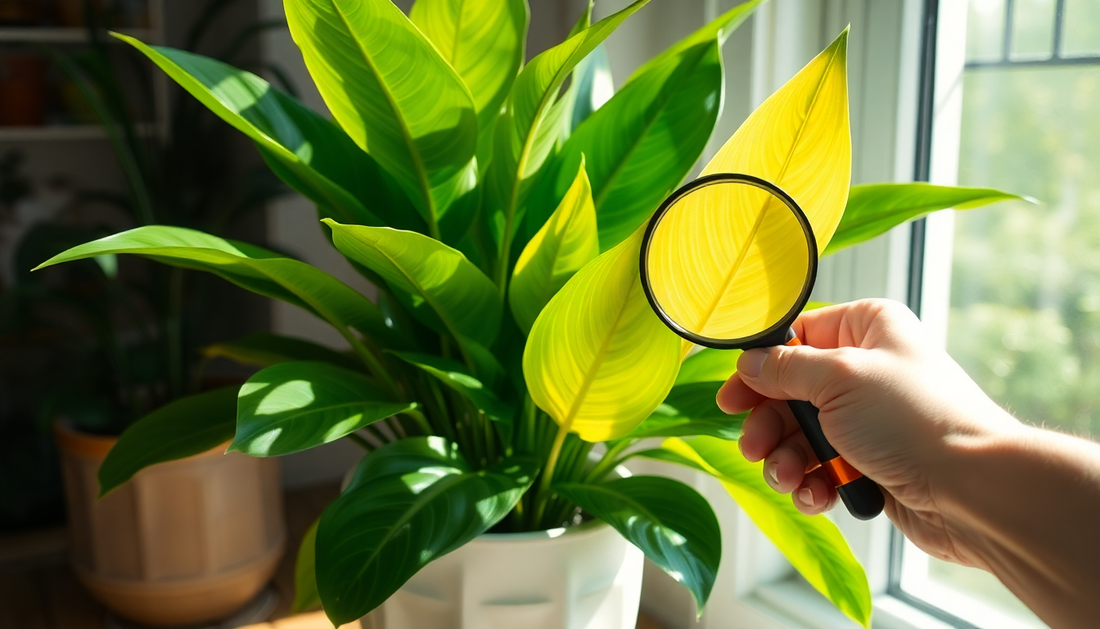
Troubleshooting Yellow Leaves on Your Peace Lily
As a dedicated plant parent, you take pride in nurturing your indoor greenery, including the beloved peace lily. However, when the lush, vibrant leaves of your peace lily start turning yellow, it can be a concerning sight. Fear not, for this common issue often has a straightforward solution. In this comprehensive guide, we'll delve into the common causes of yellowing leaves in peace lilies and provide you with the knowledge to revive your plant and restore its stunning foliage.
Understanding the Peace Lily
The peace lily, scientifically known as Spathiphyllum, is a popular indoor plant renowned for its elegant white flowers and lush, dark green leaves. These plants are native to the tropical regions of the Americas and are known for their ability to thrive in a variety of indoor environments. Peace lilies are often chosen for their air-purifying properties, as they can effectively remove various toxins from the air, making them a valuable addition to any home or office space.
Common Causes of Yellowing Leaves
While peace lilies are generally low-maintenance plants, they can still experience various issues that can lead to yellowing leaves. Understanding the underlying causes is the first step in addressing this problem and restoring the health of your plant.
Overwatering
One of the most common reasons for yellowing leaves in peace lilies is overwatering. When the soil remains too moist for an extended period, the plant's roots can become waterlogged, leading to root rot and nutrient deficiencies. This can cause the leaves to turn yellow and eventually wilt.
Underwatering
On the flip side, underwatering can also cause the leaves of a peace lily to turn yellow. When the plant doesn't receive enough moisture, it goes into survival mode, prioritizing the health of the roots and newer growth over the older leaves, which can then turn yellow and drop off.
Nutrient Deficiencies
Inadequate nutrient levels in the soil can also contribute to yellowing leaves in peace lilies. These plants require a balanced blend of essential nutrients, such as nitrogen, phosphorus, and potassium, to maintain their vibrant foliage. If the soil is depleted of these essential elements, the leaves may start to yellow.
Exposure to Chemicals
Exposure to certain chemicals, such as those found in household cleaners or pesticides, can also lead to yellowing leaves in peace lilies. These substances can disrupt the plant's natural processes and cause stress, resulting in the leaves turning yellow.
Temperature Stress
Peace lilies thrive in moderate temperatures, typically between 65°F and 85°F (18°C and 29°C). Exposure to temperatures outside of this range, either too hot or too cold, can cause the leaves to turn yellow and become stressed.
Lack of Humidity
Peace lilies prefer a humid environment, as they are native to tropical regions. If the air in your home or office is too dry, it can cause the leaves to lose moisture, leading to yellowing and wilting.
Reviving Your Peace Lily
Now that you understand the common causes of yellowing leaves in peace lilies, let's explore the steps you can take to revive your plant and restore its lush, green foliage.
Adjust Watering Habits
The first step in addressing yellowing leaves is to assess your watering routine. If you suspect overwatering, allow the soil to partially dry out between waterings, and be sure to check the drainage of your plant's pot. If underwatering is the issue, increase the frequency of watering, making sure to thoroughly soak the soil.
Fertilize Appropriately
Provide your peace lily with a balanced, water-soluble fertilizer formulated for indoor plants. Apply the fertilizer according to the manufacturer's instructions, typically every two to four weeks during the growing season. This will help replenish the essential nutrients the plant needs to maintain healthy foliage.
Optimize Temperature and Humidity
Ensure your peace lily is placed in an area with consistent, moderate temperatures, avoiding sudden fluctuations. Additionally, consider using a pebble tray or a humidifier to increase the humidity around your plant, as this can help prevent leaf yellowing.
Prune Affected Leaves
If the yellowing leaves are isolated to a few older or damaged leaves, carefully prune them off using clean, sharp scissors. This will encourage the plant to focus its energy on new, healthy growth.
Monitor for Pests and Diseases
Inspect your peace lily regularly for signs of pests or diseases, as these can also contribute to leaf yellowing. If you notice any issues, address them promptly with appropriate treatment methods.
Provide Adequate Sunlight
Peace lilies thrive in bright, indirect light. If your plant is not receiving enough light, the leaves may start to turn yellow. Move the plant to a location with brighter, but not direct, sunlight.
By addressing the underlying causes of yellowing leaves in your peace lily, you can help your plant regain its vibrant, lush appearance. Remember, patience and consistent care are key when it comes to reviving a stressed plant. With the right adjustments, your peace lily will soon be thriving once again, bringing its signature elegance and air-purifying benefits to your indoor space.
Conclusion
Yellowing leaves in peace lilies can be a common issue, but with the right knowledge and care, you can easily address and resolve this problem. By understanding the various factors that can contribute to leaf discoloration, such as overwatering, nutrient deficiencies, and environmental stressors, you can take targeted actions to revive your plant and restore its stunning foliage. Remember to adjust your watering habits, fertilize appropriately, and provide the optimal growing conditions for your peace lily. With a little TLC, your plant will soon be back to its healthy, vibrant self, enhancing the beauty and air quality of your indoor space.







No comments